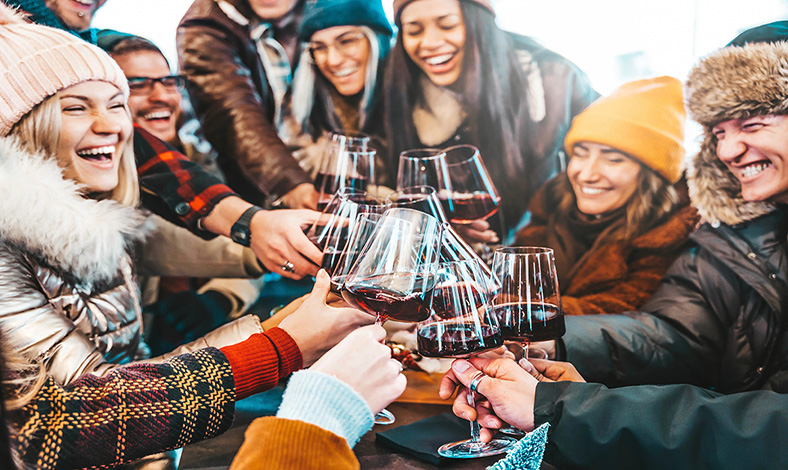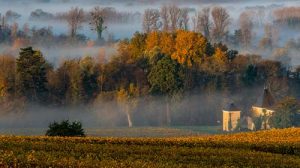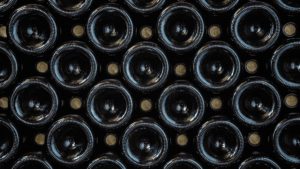
Let’s face it, winter has officially descended on the northern hemisphere. For millions of wine-lovers around the world, skiing and snowboarding presents a great opportunity to turn bitterly cold weather into something worth looking forward to. However, no trip to the snowy mountains would be complete without the famous après-ski festivities that follow a hard days’ work on the slopes. So, unstrap those boots, pick a seat by the fire, and check out our mountain-inspired wine recommendations below!
Chateau Montus, Madiran
Located less than 100km from Pyrenean ski resorts like Grand Tourmalet, Chateau Montus is perhaps the most renowned name in AOC Madiran. In 1980, Alain Brumont purchased Château Montus and began an inspiring journey toward completely revitalising the reputation of the local Madiran grape variety – Tannat.
Known for its powerful tannins and full body, the Tannat grape is perfectly suited to cold days on the mountain and as a wine pairing for hearty winter dishes like sausage or duck confit. Tannat wines are typically found in Southwest France (Madiran) and Uruguay – where it has become a bit of a national celebrity. Compared to their New World Uruguayan counterparts, Madiran Tannats typically have higher tannin levels and can include the presence of red fruit flavours.
Chateau Montus is the pinnacle of Madiran-style Tannat. Produced under sustainable conditions with minimum intervention, all Chateau Montus red wines are aged in new oak barrels (50-100% depending on the label). The Prestige label, which hasn’t been produced since 2004, was grown on the highest plots of the Chateau and aged for 14-16 months in 100% new oak barrels, creating an impressively complex bouquet of flavours and eliciting a near-meditative experience for the consumer.
Arbois Vin Jaune, Domaine de la Touraize, Jura
With the Jura mountains next door and the Suisse Alps just a short drive away, the vineyards of Jura produce wines that are surely fit for a mountainside glass. Vineyards in Jura produce many different varietals, ranging from unique local favourites like Savagnin to familiar Pinot Noirs reminiscent of their Burgundian neighbours. Domaine de la Touraize’s Arbois Vin Jaune is a fantastic representation of a local winemaking style.
Vin Jaune is a uniquely well-regarded style found in Jura which comes from the Savagnin variety. While not technically a fortified wine, Vin Jaune shares many similarities with certain Sherrys, owing much of its character to long maturation under the protection of the voile – a film of yeast that forms on the wine’s surface. Furthermore, Vin Jaune’s relatively high alcohol content and oak influence will cast a cosy blanket of warmth over its lucky consumer – a perfect accompaniment to cold nights on snowy mountains. By the time these wines hit the market, they will have aged for a minimum of 6 years and 3 months before being bottled in their signature 620ml clavelin bottle, a historical nod to the small amount of product that is lost during the aging process.
The family-run Domain de la Touraize has been producing Jura wines for eight generations. The wines are natural and biodynamic, with all vineyard work being carried out manually, including the harvest. The vinification process is natural as well, allowing for spontaneous fermentation started by indigenous yeasts and limiting any additional sulphur to an amount that can still be considered natural. As is the case with all Vin Jaunes, there is a long ageing process in oak barrels where the wine is protected from over-oxidization by the voile. The winemaking practices of Domain de la Touraize result in a truly unique product, surly worth adding to the packing list for your upcoming ski trip.
IGP Vins des Allobroges Argile Blanc, Domaine des Ardoisières, Savoie
The Savoie – or Savoy in English – wine growing region in France is famous for two things – being the only truly alpine wine region of France, and for its unique focus on varieties which are considered rare outside of the region. Due to its location in the heart of the French Alps, no other region is as inextricably linked to snowy mountains and world-class ski resorts. For your next winter trip to the Alps, why not enjoy a little local production? Domaine des Ardoisières is located a mere 22-minute drive from Albertville (host of the 1992 winter Olympics), and less than 100km from both Chamonix and Grenoble (hosts of the 1924 and 1968 games respectively). Therefore, the culture of winter sports runs deep in this part of the world.
The Argile Blanc cuvée from Domaine des Ardoisières takes full advantage of the unique grapes found in Savoie, choosing to include three different varieties in the blend (Jacquère, Mondeuse Blanche and Chardonnay). From west-facing slopes, the grapes that go into this cuvée are fermented by indigenous yeasts only. Wine lovers can expect pure and chiselled wine with notes of citrus fruits and pine – a brilliant example of an exciting alpine wine.
Crémant du Jura, Guillaume Overnoy, Jura
Could there be a better way to cap off a worthwhile trip to the mountains than popping open some sparkling wine? We think not – and that’s why we’re heading back to Jura where the majority of sparkling wine is based around Chardonnay and produced using the traditional method (second fermentation in the bottle). If you’re thinking that the name Overnoy sounds familiar, you’re not wrong as Pierre Overnoy, a legendary Jura winemaker, is Guillaume Overnoy’s great uncle. The estate is certified organic and uses as little intervention as possible during the winemaking process. His 100% Chardonnay Crémant du Jura does not have a dosage (additional sugar) added it it, leaving the qualities of the vintage to shine. Fine bubbles pop on the palate to reveal the flavours of the region. It is an exquisite example of Crémant, produced by one of the region’s rising stars.
Cheval des Andes, Mendoza
Found at the foothills of the Andes mountains, the Mendoza wine region in Argentina has a celebrated history of highly successful Malbecs. Cheval des Andes is no exception, with their 2019 vintage garnering an outstanding 98 points from Robert Parker and 97 points from James Suckling.
Mendoza wine production originally started in the 16th century for religious purposes, but it wasn’t until the 19th century when it truly began to exert its influence on the region. By the early 20th century, the great majority of planted vines were of French stock, primarily Malbec. The vineyards enjoy a mild, continental climate, albeit semi-arid, with four distinct seasons. Many of the vineyards overlook a majestic view of the snow-capped Andes mountains, undoubtably rivalling the view from the bottom of your favourite ski resort.
Born as a partnership between Chateau Cheval Blanc (Bordeaux) and Terraza de los Andes (Mendoza), Cheval des Andes produces Malbec-heavy blends featuring Bordeaux varietals such as Cabernet Sauvignon and Petit Verdot in varying proportions according to the vintage. Some of the property’s existing Malbec vines are 80 years old, never having been grafted. The original vines arrived from France in the 19th century, therefore placing today’s ungrafted plantation squarely within the unique world of pre-phylloxera French vines.
If this article has you more interested in wines from Jura and Savoy, we highly suggest you check out our selection at iDealwine!



